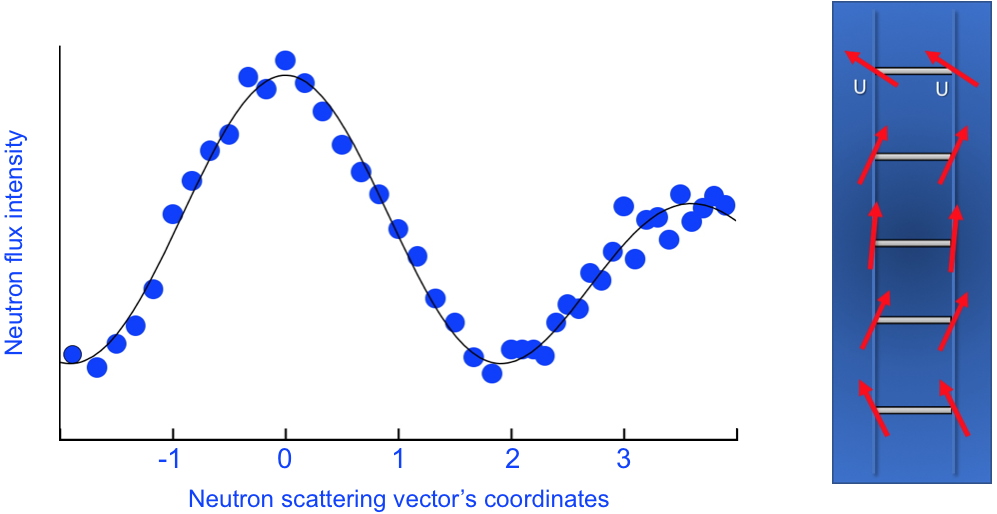The superconductivity of materials,
i.e. the ability to conduct electric current without loss of energy, is attracting the attention of fundamental and applied research. In a well-understood behavior, most metals become superconductors at very low temperatures, and this state is incompatible with magnetic properties. The discovery of new families of materials is challenging the understanding of the mechanisms of superconductivity. Indeed, researchers have discovered materials that can be both magnetic and superconducting, such as certain uranium-based alloys..
Discovered in 2018, the superconductivity of the compound UTe
2 has the remarkable property of being robust to the magnetic field, because the electrons gather in pairs with their spin oriented in the same direction. This superconductivity is of the "spin triplet" type. Researchers at our laboratory have performed neutron scattering experiments at the Institut Laue Langevin in Grenoble to measure the magnetic fluctuations of UTe
2 at the atomic level. A detailed analysis has allowed to highlight the local ferromagnetic coupling of Uranium atoms in the middle of dominant antiferromagnetic fluctuations. This coupling is located within the crystallographic structure of UTe
2, between the two closest uranium atoms forming a ladder composed of legs and rungs (
Figure). The hypothesis is that this ferromagnetic coupling is very favorable to the realization of the "spin triplet" state of the electron pairs.
Later, the researchers will study precisely the link between the ferromagnetic ladder rungs and superconductivity. The characteristics obtained by neutron scattering are essential information, at the microscopic scale, to build a theoretical description of the superconducting behavior of UTe
2. This fundamental knowledge will allow a more general understanding of unconventional superconductivity.
 Figure: Spectrum of neutron scattering in UTe2.
Figure: Spectrum of neutron scattering in UTe2.
The magnetic fluctuations describe a sinusoidal curve. The maximum of the curve is due to the ferromagnetic coupling of the uranium atoms (red arrows: magnetic moment) which form the rungs of a ladder.
© CEA
Collaboration: Laboratoire National des Champs Magnétiques Intenses de Toulouse (LNCMI), Institut Laue Langevin de Grenoble (ILL), Tohoku University and Japan Atomic Energy Agency (JAEA), Japan.